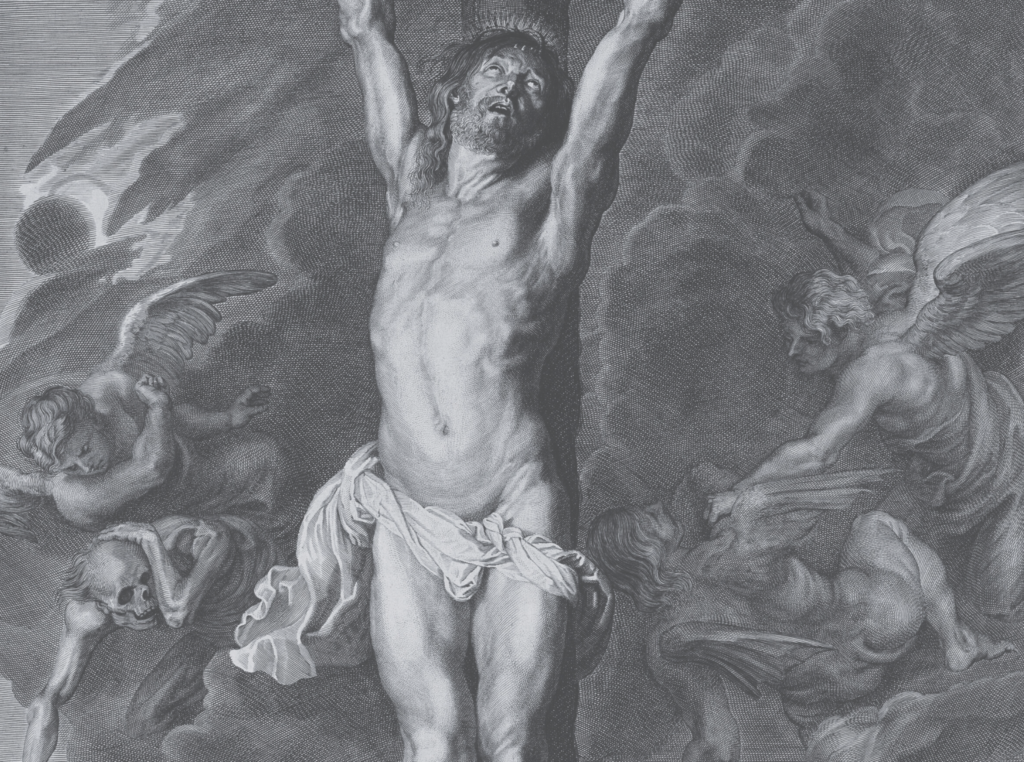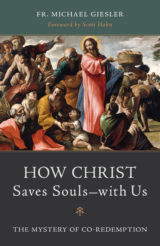Was Jesus’ Death the Most Painful Death in History?
By Clement Harrold

Although crucifixion is not necessarily the most painful form of execution ever devised by men, it is nevertheless reasonable to believe that Christ’s death was the most painful death in history.
First, on the physical level, crucifixion is undoubtedly one of the most excruciating forms of torture and execution ever invented. The very term “excruciating” is drawn from the Latin ex cruce (“from the cross”), and the physical pains of crucifixion included horrific blood loss, suffocation, dehydration, exposure, shock, exhaustion, early onset of infection, and agonizing muscle cramps.
When used, nails caused an unbelievable amount of added agony due to their constant scraping against the median nerve between the palm and the wrist, sending shock waves reverberating through the body for hours on end. In the case of Jesus, we also know that the crucifixion procedure involved prior torture in the form of scourging, crowning with thorns, and being forced to carry His own cross.
Along with the testimony of the Shroud of the Turin, archaeological evidence indicates that the pre-crucifixion scourging was an extremely violent form of punishment. Pieces of bone, rock, and pottery were attached to the cords of the whip and then used to shred the back of the victim. Because of the length of the cords, the thighs, stomach, buttocks, and even genitals of the victim were also lacerated.
Second, on the psychological level, crucifixion was the most shameful form of death that the Roman mind could conceive. Jesus was affixed to the cross almost or entirely naked, and then lifted up for the crowd to watch and jeer. More than that, crucifixion in first century Mediterranean society was widely perceived as a slave’s death, and therefore a tremendously humiliating punishment for a free man to undergo, particularly in a world where honor was a value prized above all else.
Strung up for hours on end, crucifixion victims suffered the humiliation of their utter helplessness and the knowledge that the only way off their cross would be in the form of a corpse. We can imagine the flies gathering around Jesus’s open wounds as He hung there for a crime He didn’t commit.
Disturbingly, the ancient historian Josephus even talks about birds approaching crucifixion victims and beginning to pluck at their genitals and eyeballs before the victims were fully dead. On top of all this, Jesus had to process the experience of being rejected, disowned, and betrayed by almost all of His closest friends.
Third, in the case of Jesus, the physical pains of crucifixion reached a level that is impossible for sinful men. The theological reason for this, as St. Thomas Aquinas explains in his Summa Theologiae, is that Christ’s mortal body was perfectly constituted. It had never been touched by the stain of sin, with the result that “Christ's sense of touch, the sensitiveness of which is the reason for our feeling pain, was most acute.”
A nail in our flesh is awful because of our basic human capacity for pain. But the nails in Christ’s sinless flesh were excruciating beyond belief, since His soul was so perfectly in tune with even the smallest physical sensations His body might undergo.
Aquinas also adds this consideration about Our Lord: “His soul likewise, from its interior powers, apprehended most vehemently all the causes of sadness.” Hence, if we’re ever tempted to think that perhaps Jesus didn’t suffer too badly because He’s God and He can handle it, then we should realize the opposite is true: Jesus’s capacity for grief was greater than ours, not less.
Fourth, Jesus deliberately did not take steps to diminish His interior experience of the severity of the pain. In virtually every other death in human history, our natural response is to do our utmost to limit our pain by distracting ourselves, casting our mind elsewhere, and diverting our attention in whichever ways we can. This did not occur in Jesus’s case. He willfully embraced the suffering head on, and allowed it to fully consume His sensory and interior powers.
Fifth, in addition to all of the foregoing, Jesus also took on a spiritual burden unlike anything experienced by any human being in history. On top of all His other sufferings, for six long hours He allowed every sin ever committed to be made present in His mind and imagination, in order that He might lovingly bear it and destroy it. In an extraordinary sermon which is worth reading in full, St. John Henry Newman vividly describes this experience of Our Lord:
Oh, the horror, when He looked, and did not know Himself, and felt as a foul and loathsome sinner, from His vivid perception of that mass of corruption which poured over His head and ran down even to the skirts of His garments! Oh, the distraction, when He found His eyes, and hands, and feet, and lips, and heart, as if the members of the Evil One, and not of God! Are these the hands of the Immaculate Lamb of God, once innocent, but now red with ten thousand barbarous deeds of blood? are these His lips, not uttering prayer, and praise, and holy blessings, but as if defiled with oaths, and blasphemies, and doctrines of devils? or His eyes, profaned as they are by all the evil visions and idolatrous fascinations for which men have abandoned their adorable Creator? And His ears, they ring with sounds of revelry and of strife; and His heart is frozen with avarice, and cruelty, and unbelief; and His very memory is laden with every sin which has been committed since the fall, in all regions of the earth, with the pride of the old giants, and the lusts of the five cities, and the obduracy of Egypt, and the ambition of Babel, and the unthankfulness and scorn of Israel.
As he hung there at Calvary, Jesus allowed Himself to feel and to take on all of the darkness mankind. As the prophet Isaiah put it, “Surely he has borne our griefs and carried our sorrows” (Is 53:4).
Most assuredly, then, the death of our Beloved Savior was the most painful death imaginable.
Clement Harrold is a graduate student in theology at the University of Notre Dame. His writings have appeared in First Things, Church Life Journal, Crisis Magazine, and the Washington Examiner. He earned his bachelor's degree from Franciscan University of Steubenville in 2021.
You Might Also Like
There is an important truth too many Christians don’t know: we are called to actively participate in the redemption Christ won for us on the Cross. This is at once simple and complex—how can we be co-redeemers? With a clear and lively style, How Christ Saves Souls—with Us: The Mystery of Co-Redemption calls the everyday Catholic to embrace their role as a partaker in Christ’s redeeming grace.
Fr. Michael Giesler uses sound theological and scriptural backing to illustrate, in practical terms, how each of us can truly be another Christ, Christ Himself (ipse Christus), in our words and actions.


